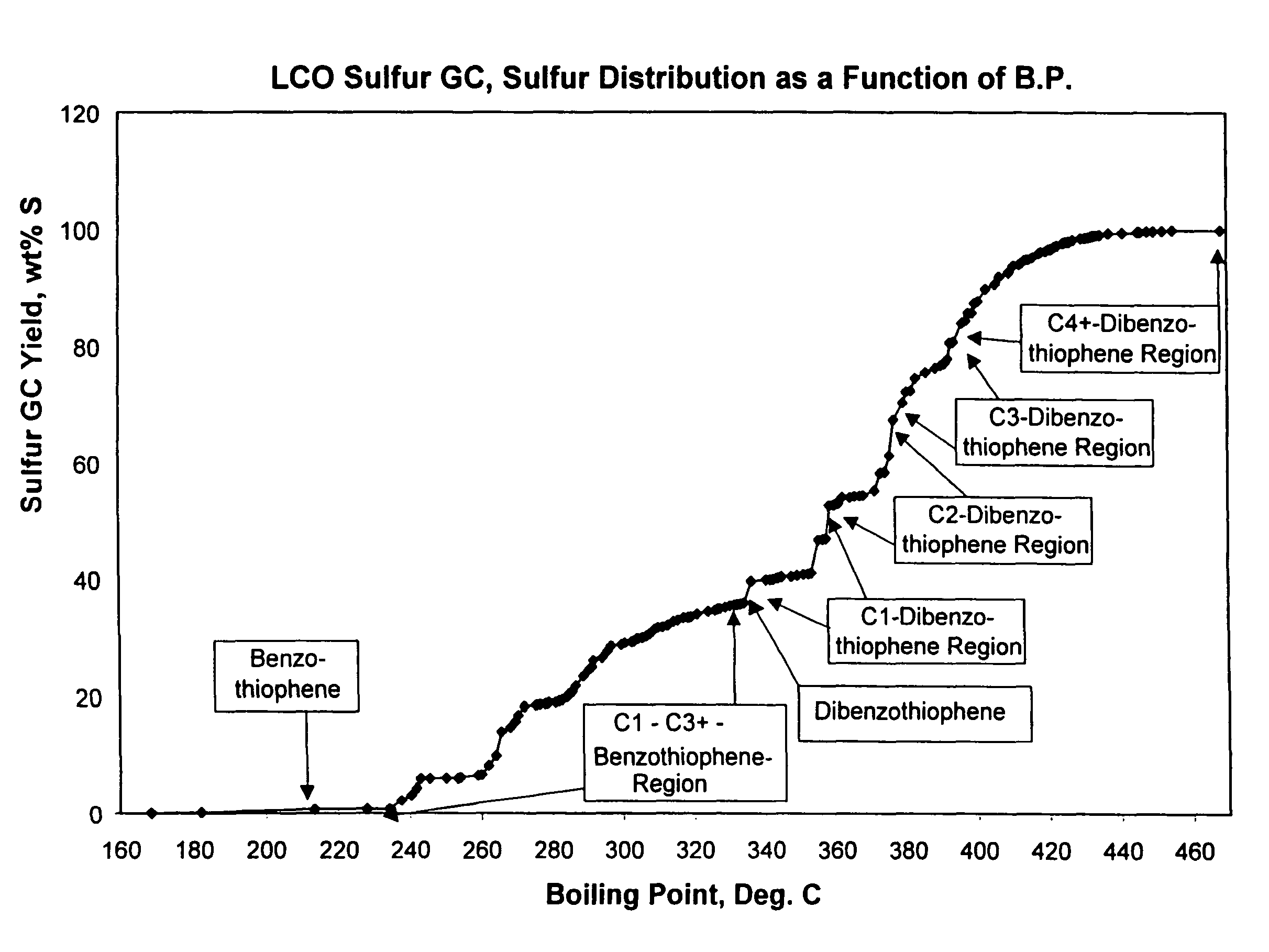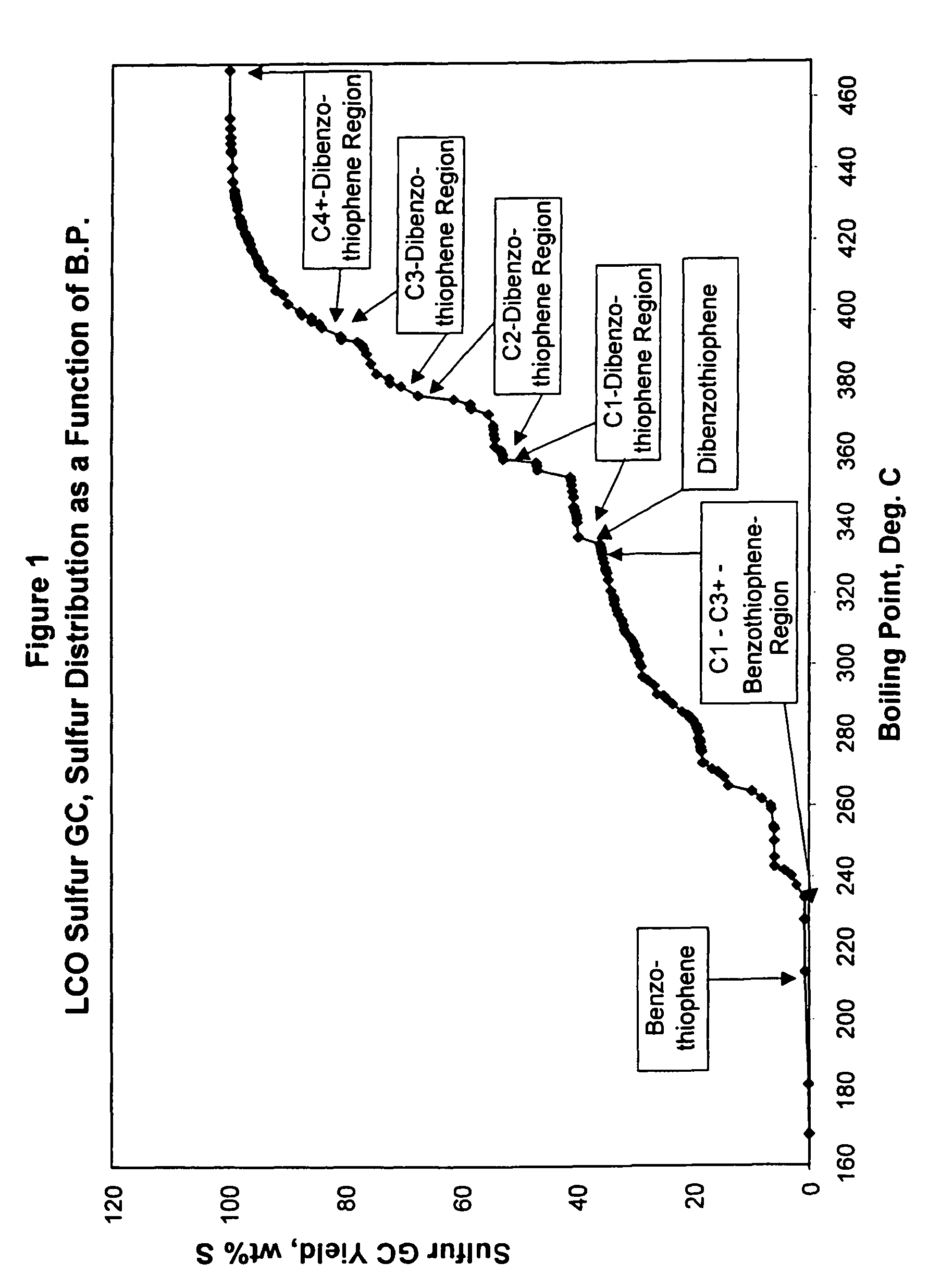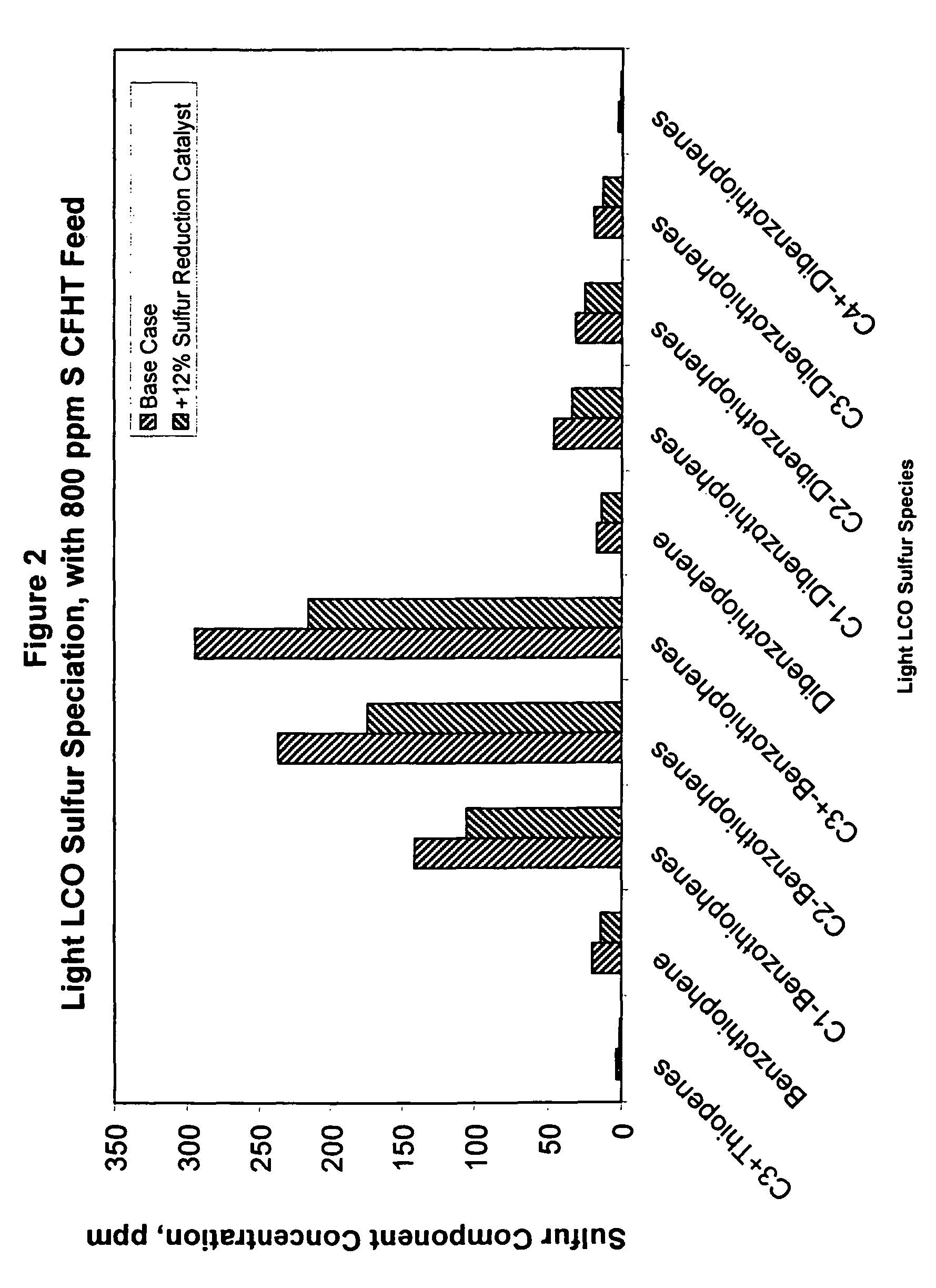Gasoline sulfur reduction in fluid catalytic cracking
a technology of gasoline sulfur and fluid catalytic cracking, which is applied in the direction of physical/chemical process catalysts, molecular sieve catalysts, chemical/physical processes, etc., can solve the problems of high equipment and operational costs, low efficiency, and loss of valuable product octan
- Summary
- Abstract
- Description
- Claims
- Application Information
AI Technical Summary
Benefits of technology
Problems solved by technology
Method used
Image
Examples
example 1
Preparation of Catalyst Series I
[0054]A V / USY catalyst, Catalyst A, was prepared using a commercial H-form USY (crystal) with a bulk silica-to-alumina ratio of 5.4 and 2.435 nm unit cell size. A fluid catalyst was prepared by spray drying aqueous slurry containing 40 wt % of the USY crystals, 25 wt % silica, 5 wt % alumina, and 30 wt % kaolin clay. The spray-dried catalyst was calcined at 540° C. (1000° F.) for 3 hours. The resulting H-form USY catalyst was impregnated with a vanadium oxalate solution to target 0.4 wt % V by incipient wetness impregnation. The impregnated V / USY catalyst was further air calcined at 540° C. (1000° F.) for 3 hours. The final catalyst contains 0.39% V.
[0055]A Ce+V / USY catalyst, Catalyst B, was prepared from the same, spray-dried H-form USY catalyst intermediate as Catalyst A. The H-form USY catalyst was impregnated with a solution of Ce(NO3)3 to target 1.5 wt % Ce loading using an incipient wetness impregnation method. Resulting Ce / USY catalyst was air ...
example 2
Preparation of Catalyst Series 2
[0057]All samples in Catalyst Series 2 were prepared from a single source of spray dried material, consisting of 50% USY, 21% silica sol and 29% clay. The starting USY had a bulk silica-to-alumina ratio of 5.4 and 2.435 nm unit cell size. The spray dried catalyst was slurried with a solution of (NH4)2SO4 and NH4OH at pH of 6 to remove Na+, followed by washing with water and air calcination at 650° C. (1200° F.) for 2 hours.
[0058]A V / USY catalyst, Catalyst C, was prepared using the above H-form USY catalyst. The H-form USY catalyst was impregnated with a vanadium oxalate solution to target 0.5 wt % V by incipient wetness impregnation. The impregnated V / USY catalyst was further air calcined at 650° C. (1200° F.) for 2 hours. The final catalyst contains 0.53% V.
[0059]A Ce+V / USY catalyst, Catalyst D, was prepared from the above H-form USY catalyst. The H-form USY catalyst was exchanged with a solution of CeCl3 to target 0.75 wt % Ce loading. Resulting Ce / ...
example 3
Preparation of Catalyst Series 3
[0064]All samples in Catalyst Series 3 were prepared from a single source of spray dried material, consisting of 40% USY, 30% colloidal silica sol, and 30% clay. The starting H-form USY had a bulk silica-to-alumina ratio of 5.4 and 2.435 nm unit cell size. The spray-dried catalyst was air calcined at 540° C. (1000° F.) for 3 hours.
[0065]A Ce / USY catalyst, Catalyst G, was prepared using the above H-form USY catalyst. The H-form USY catalyst was impregnated with a solution of Ce(NO3)3 to target 1.5 wt % Ce loading using an incipient wetness impregnation method. Resulting Ce / USY catalyst was air calcined at 540° C. (1000° F.) followed by steaming at 540° C. (1000° F.) for 3 hours.
[0066]A Ce+V / USY catalyst, Catalyst H, was prepared from Catalyst G. The Ce / USY catalyst was impregnated with a vanadium oxalate solution to target 0.5 wt % V by incipient wetness impregnation. The impregnated Ce+V / USY catalyst was dried and air calcined at 540° C. (1000° F.) fo...
PUM
| Property | Measurement | Unit |
|---|---|---|
| weight percent | aaaaa | aaaaa |
| size | aaaaa | aaaaa |
| boiling point | aaaaa | aaaaa |
Abstract
Description
Claims
Application Information
 Login to View More
Login to View More - R&D
- Intellectual Property
- Life Sciences
- Materials
- Tech Scout
- Unparalleled Data Quality
- Higher Quality Content
- 60% Fewer Hallucinations
Browse by: Latest US Patents, China's latest patents, Technical Efficacy Thesaurus, Application Domain, Technology Topic, Popular Technical Reports.
© 2025 PatSnap. All rights reserved.Legal|Privacy policy|Modern Slavery Act Transparency Statement|Sitemap|About US| Contact US: help@patsnap.com



